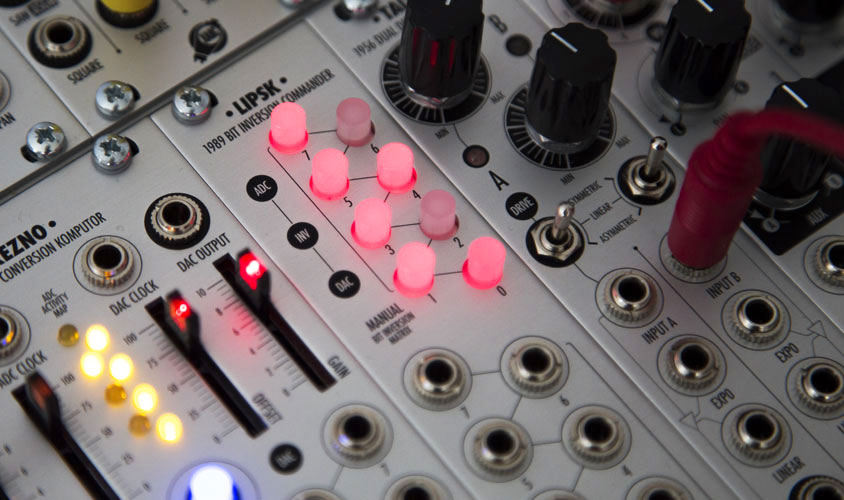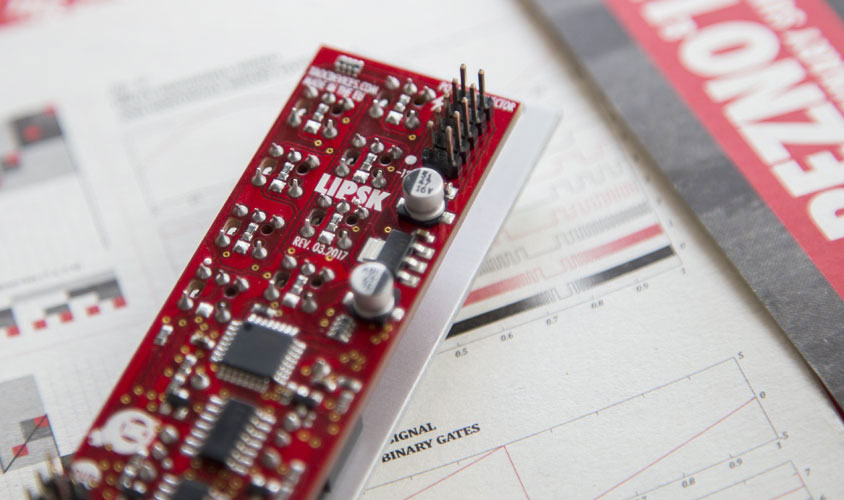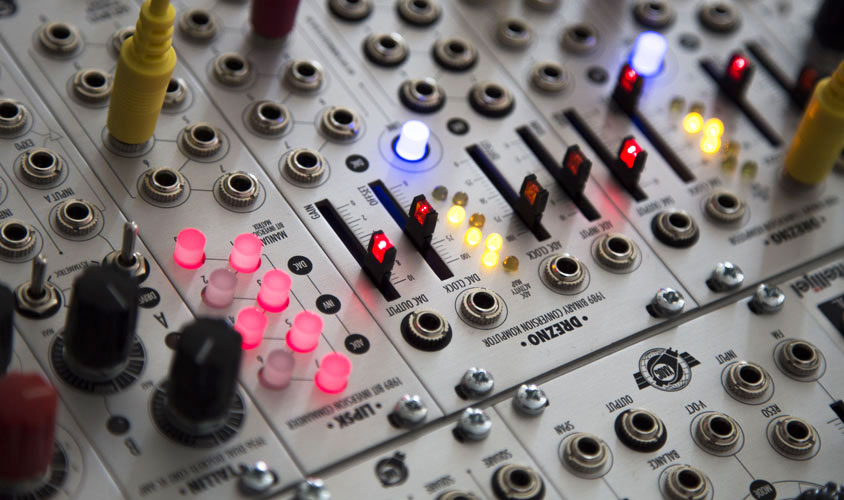Lipsk
Lipsk
Bit Inversion Commander
Model of 1989
Resources
Description
Lipsk facilitates the inversion of the individual bits produced by Drezno (or any other module connected to its input header at the back), and delivers the resulting code to its output header. Bit inversion can be manually controlled by pressing any of combination of its eight illuminated buttons, or it can be automated by patching gate signals into its gate input sockets. An active (5V) gate flips the state of the respective bit. If the button is active (bit already flipped), then the gate flips the bit again yielding double inversion (no inversion). The corresponding LEDs show the combined effect of both manual and gate actions. The bit processing logic is hardware-based, so there is virtually no latency, allowing the binary signals to be manipulated at extreme rates. For detailed description, please refer to the manual.
Features
- Element of the universal subsystem for creating and processing analog signals in the 8-bit digital domain
- Suitable for CV and audio processing with no aliasing
- Bit inversion with manual and CV gate control
- No latency logic processing
Technical details
- 6hp, skiff friendly
- Current draw: +30mA / -0mA
- Reverse power protection
Expandability
Drezno is the input/output front-end of the system, consisting of an analog–to–digital converter (ADC) and a digital–to–analog converter (DAC), that alone can be used for manipulating analog signals and voltages based on their binary representation.
Jena is a digital module that may be used as a flexible waveshaper for CV and audio signals, a wavetable oscillator, a Walsh function generator, or a rhythm generator.
Erfurt is a bi-directional digital counter, frequency divider. It has multiple applications: the output of the counter may be used as a phase source driving a digital wavetable, connected to other Leibniz modules it may scan waveshapes in Jena, produce stepped voltages useful for making interesting glissandi with Drezno and any VCO, generate gate patterns animating the spectrum of Odessa harmonic banks, spawn pseudo-chaotic sequences when fed back to Lipsk, etc.
Poczdam is a binary data routing solution for the Xaoc Leibniz Subsystem. It facilitates manual and remote switching between two Leibniz data sources.



